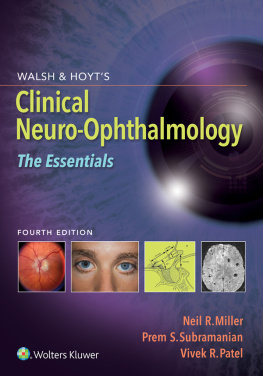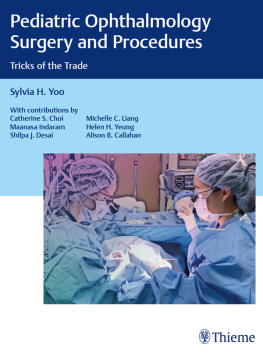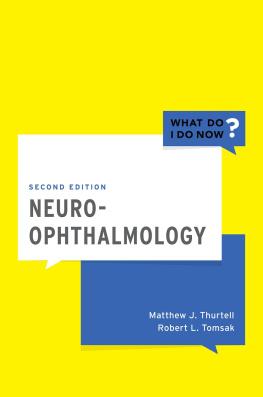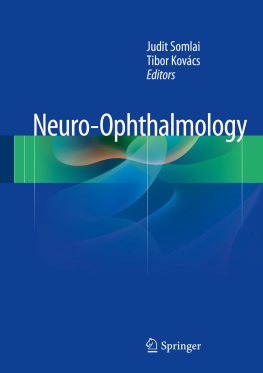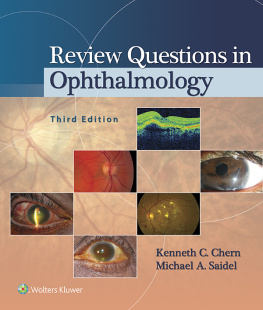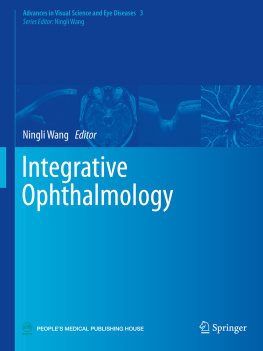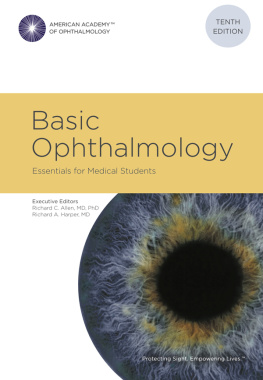Neil J. Friedman - Review of Ophthalmology - E-Book
Here you can read online Neil J. Friedman - Review of Ophthalmology - E-Book full text of the book (entire story) in english for free. Download pdf and epub, get meaning, cover and reviews about this ebook. year: 2022, publisher: Elsevier Health Sciences, genre: Romance novel. Description of the work, (preface) as well as reviews are available. Best literature library LitArk.com created for fans of good reading and offers a wide selection of genres:
Romance novel
Science fiction
Adventure
Detective
Science
History
Home and family
Prose
Art
Politics
Computer
Non-fiction
Religion
Business
Children
Humor
Choose a favorite category and find really read worthwhile books. Enjoy immersion in the world of imagination, feel the emotions of the characters or learn something new for yourself, make an fascinating discovery.

- Book:Review of Ophthalmology - E-Book
- Author:
- Publisher:Elsevier Health Sciences
- Genre:
- Year:2022
- Rating:5 / 5
- Favourites:Add to favourites
- Your mark:
- 100
- 1
- 2
- 3
- 4
- 5
Review of Ophthalmology - E-Book: summary, description and annotation
We offer to read an annotation, description, summary or preface (depends on what the author of the book "Review of Ophthalmology - E-Book" wrote himself). If you haven't found the necessary information about the book — write in the comments, we will try to find it.
Review of Ophthalmology - E-Book — read online for free the complete book (whole text) full work
Below is the text of the book, divided by pages. System saving the place of the last page read, allows you to conveniently read the book "Review of Ophthalmology - E-Book" online for free, without having to search again every time where you left off. Put a bookmark, and you can go to the page where you finished reading at any time.
Font size:
Interval:
Bookmark:
Fourth Edition
Neil J. Friedman, MD
Adjunct Clinical Professor, Department of Ophthalmology, Stanford University School of Medicine Partner, Mid-Peninsula Ophthalmology Medical Group Menlo Park, CA, USA
William B. Trattler, MD
Director of Cornea, Center for Excellence in Eye Care Vice Chair of Research for the Department of Ophthalmology Florida International University Wertheim College of Medicine Miami, FL, USA
Peter K. Kaiser, MD
Chaney Family Endowed Chair for Ophthalmology Research Professor of Ophthalmology Cleveland Clinic Lerner College of Medicine Cole Eye Institute, Cleveland Clinic Cleveland, OH, USA

Elsevier
1600 John F. Kennedy Blvd.
Ste 1800
Philadelphia, PA 19103-2899
REVIEW OF OPHTHALMOLOGY, FOURTH EDITIONISBN: 978-0-323-79418-3
Copyright 2023 by Elsevier Inc. All rights reserved.
No part of this publication may be reproduced or transmitted in any form or by any means, electronic or mechanical, including photocopying, recording, or any information storage and retrieval system, without permission in writing from the publisher. Details on how to seek permission, further information about the Publishers permissions policies and our arrangements with organizations such as the Copyright Clearance Center and the Copyright Licensing Agency, can be found at our website: www.elsevier.com/permissions.
This book and the individual contributions contained in it are protected under copyright by the Publisher (other than as may be noted herein).
Notice
Practitioners and researchers must always rely on their own experience and knowledge in evaluating and using any information, methods, compounds, or experiments described herein. Because of rapid advances in the medical sciences, in particular, independent verification of diagnoses and drug dosages should be made. To the fullest extent of the law, no responsibility is assumed by Elsevier, authors, editors, or contributors for any injury and/or damage to persons or property as a matter of products liability, negligence or otherwise, or from any use or operation of any methods, products, instructions, or ideas contained in the material herein.
Previous editions copyrighted 2018, 2012, and 2004.
Senior Content Strategist: Kayla Wolfe
Content Development Manager: Somodatta Roy Choudhury
Senior Content Development Specialist: Shweta Pant
Publishing Services Manager: Shereen Jameel
Senior Project Manager: Manikandan Chandrasekaran
Design Direction: Ryan Cook
Printed in India
Last digit is the print number:987654321

It gives us great pleasure to introduce the fourth edition of Review of Ophthalmology. The book retains its outline format and multiple-choice questions organized into chapters based on common written exam sections. In this edition, we have expanded the content with new topics and questions, rewritten large sections, and updated disease management with the latest treatments. We are committed to providing you with essential information in the most concise and user-friendly manner. We hope that we have met this goal and you continue to find Review of Ophthalmology a valuable book.
We wish you the best of luck on your exams and in your future careers!
Neil J. Friedman, MD
William B. Trattler, MD
Peter K. Kaiser, MD
We owe thanks to our colleagues, family, and friends who supported us with the fourth edition of Review of Ophthalmology; we are grateful for all your assistance.
We appreciate the time and effort of Dr. Sruthi Arepalli for her diligent chapter review.
We continue to work with a wonderful editorial team at Elsevier: thank you, Kayla Wolfe, Laura Klein, Shweta Pant, Manikandan Chandrasekaran and your staff for all your hard work and dedication.
Finally, a special thank-you to our families for their love and understanding: Mae, Jake, Dawn, Peter Jr., Stephanie, Jennifer, Ali, Jeremy, Josh, and Danny.
Neil J. Friedman, MD
William B. Trattler, MD
Peter K. Kaiser, MD
Basic ideas of optics from camera obscura (dark chamber; pinhole camera): small dark room or box with a small hole to capture image of an outside scene or object (projected onto opposite side from aperture); 3 observations:
- 1. Image is inverted (light rays travel in straight line, intersect at aperture)
- 2. Image is dim (small aperture limits amount of light)
- 3. Depth of field is infinite (small aperture only allows entering light from 1 direction)
Enlarging aperture makes image brighter but blurry
Adding lens makes image sharp but lose depth of field
Challenge of optics: manipulate light from aperture to create sharp enough and bright enough image for a specific application
Describes macroscopic behavior of light; uses artificial construct of light rays, ignores wave characteristics
Basic principles of geometric optics:
- 1. Light rays travel in straight lines through uniform media
- 2. Light rays deviated by reflection or refraction
- 3. When light rays encounter multiple refractive surfaces, image formed at each becomes object for next
- 4. Paths of light rays are reversible
Fermats principle: light travels along fastest path between 2 points
Describes microscopic wave and particle (photon) properties of light
Speed (velocity) () is directly proportional to wavelength () and frequency ():v=
- In any given medium, speed of light is constant (vvacuum=c=3.01010 cm/s); therefore, wavelength and frequency are inversely proportional
- Light slows down in any substance other than air or vacuum; amount of slowing depends on medium; frequency of light remains unchanged, but wavelength changes (becomes shorter) ()
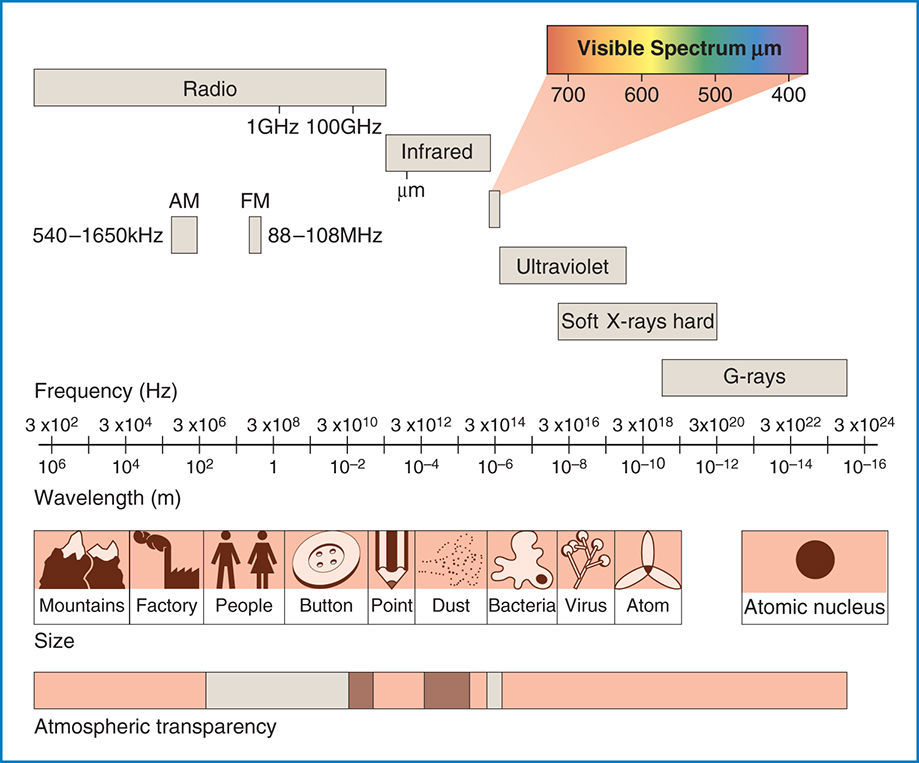
Figure 1.1 The electromagnetic spectrum. The pictures of mountains, people, buttons, viruses, and so forth are used to produce a real (i.e., visceral) feeling of the size of some of the wavelengths. (With permission from Miller D, Burns SK. Visible light. In: Yanoff M, Duker JS, eds. Ophthalmology,2nd ed. St Louis: Mosby; 2004.)
Energy is directly proportional to frequency and inversely proportional to wavelength: E=h=h(c/)
Index of refraction(n): ratio of speed of light in a vacuum to speed of light in specific material (n=c/v)
Air=1.00, water=1.33, aqueous and vitreous=1.34, cornea=1.37, crystalline lens=1.42, intraocular lens (IOL; silicone=1.41; polymethyl methacrylate 1.49; acrylic=1.55), glass=1.52, high-index lenses=1.6-1.8
Interference: overlapping of light waves; may be constructive or destructive
Font size:
Interval:
Bookmark:
Similar books «Review of Ophthalmology - E-Book»
Look at similar books to Review of Ophthalmology - E-Book. We have selected literature similar in name and meaning in the hope of providing readers with more options to find new, interesting, not yet read works.
Discussion, reviews of the book Review of Ophthalmology - E-Book and just readers' own opinions. Leave your comments, write what you think about the work, its meaning or the main characters. Specify what exactly you liked and what you didn't like, and why you think so.

